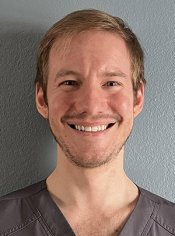
Labor department statistics portend major growth in the health care industry and the report on respiratory therapy should really put wind in the sails of potential respiratory therapists.
South Dakota’s health care industry is projected to be among the largest growth industries through 2028, according to the Labor Market Information Center within the South Dakota Department of Labor and Regulation. The industry is projected to add 6,472 workers to the state’s economy between 2018 and 2028. The rate of growth is projected to be 11.3%, much faster than the 7.1% projected for all industries.
The national median pay with an associate degree in respiratory therapy is $62,810, according to the Bureau of Labor Statistics.
For respiratory therapists, the growth rate is 28%, ranking third of all occupations.
Those in the industry already know the demand.
From intern to full time
Grace Fields, of Jackson, Minnesota, graduated in May 2021 with an associate degree in respiratory therapy from SDSU. She is now working full time with the opportunity to pick up overtime, as a respiratory therapist at Sanford Health in Sioux Falls. “I am very bad at saying no to picking up extra shifts,” the 19-year-old Jackson, Minnesota, native said.
As a student, between clinicals and working as a respiratory care intern, she nearly had a full-time job, gaining loads of knowledge and experience.
Sam Evans will graduate from the respiratory therapy program in May. Since December, he has been working as a respiratory intern at Monument Health in Rapid City. Paid internships are available at both the Sioux falls and Rapid City clinical sites for students in the program.
“It’s a good field to get in. The job growth projections are strong. Job security isn’t a concern. You can get your foot in the door without going to school for four to six years and it’s good pay,” said Evans, a 2012 graduate of Douglas High School, who had his first taste of health care when working as a phlebotomist at Monument from summer 2014 to September 2017.

He enjoyed the care aspect of the job. In August 2019, he ran into a buddy who worked at the hospital and had enrolled in the program.
After learning the details, Evans enrolled the next day and began taking prerequisites in January 2020. He began the three-semester professional program in May 2021 and will complete it in 12 months. “There are a lot of different aspects, so the materials don’t get too monotonous,” Evans said. Classes and clinicals are at Monument in Rapid City and Avera and Sanford in Sioux Falls.
Finding the confidence to make decisions when in charge can be challenging, but he feels the training has been appropriate. “There’s just enough of pushing the little bird to leave the nest; enough to push us but not enough to put ourselves or anyone else in danger,” Evans said.
“If someone is thinking about becoming a respiratory therapist, I 100% recommend going to any local hospital and shadowing. The demand has never been higher.
100% placement program-wide
Currently, program-wide there are 40 students working toward an associate degree and 20 working toward a bachelor’s degree.
“We have 100% job placement rate for both sites along with a board exam pass rate much above the national average,” according to Abby Wortman, a Rapid City instructor.
Fields said the program is “very compacted and very quick paced. It’s amazing how much you learn in your three semesters. Instruction is very hands-on. The teachers were fantastic. They spent a lot of time with us. They would stay after hours.”
COVID-19 meant more work for students
She started in October 2020 using the opportunity to be hired as a respiratory therapy student intern. These students work under a temporary permit issued by the South Dakota Board of Medical and Osteopathic Examiners.
As initial COVID-19 cases were rising, the respiratory therapists’ workload followed suit. The interns were an important piece to the hospital’s workforce.
“When you’re working as a student therapist, you’re just on the (general care) floors. It was really good experience, especially because COVID was high. There were a lot more critical patients on the floor than otherwise. They were really flexible with our class schedules,” Fields said. She would typically work after her clinical shift.
“The caseload (students were assigned) was not overwhelming but you still get good time management skills,” Fields added.
After graduation, she earned her registered respiratory therapist credential and was able to obtain a permanent license. As a full-time Sanford employee, she was orientated to each area—adult ICU, neonatal intensive care, pediatric intensive care and adult general care. She now works the majority of her shifts in the neonatal intensive care unit.
“We see a lot of micro preemie babies, less than 30 weeks (gestation). My favorite thing is watching those babies go home after they’ve been there two or three months,” Fields said.
- Contact:
- Telephone number: 605-688-4538
Republishing
You may republish SDSU News Center articles for free, online or in print. Questions? Contact us at sdsu.news@sdstate.edu or 605-688-6161.

